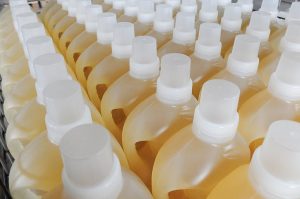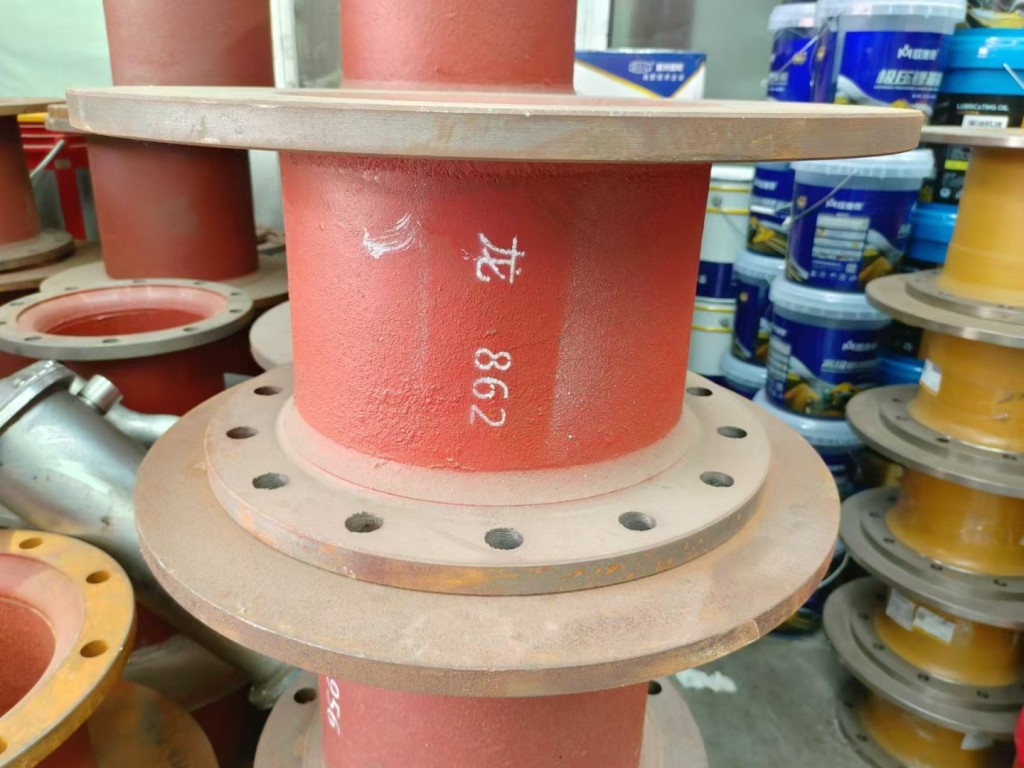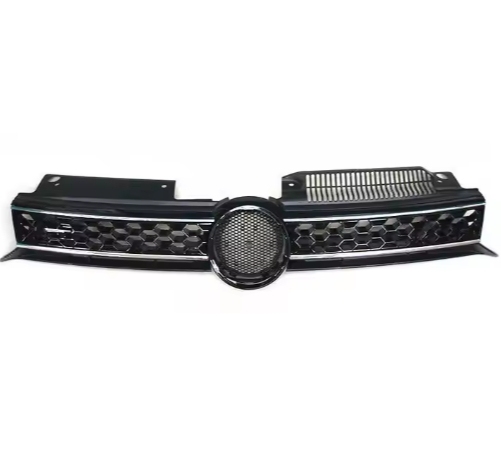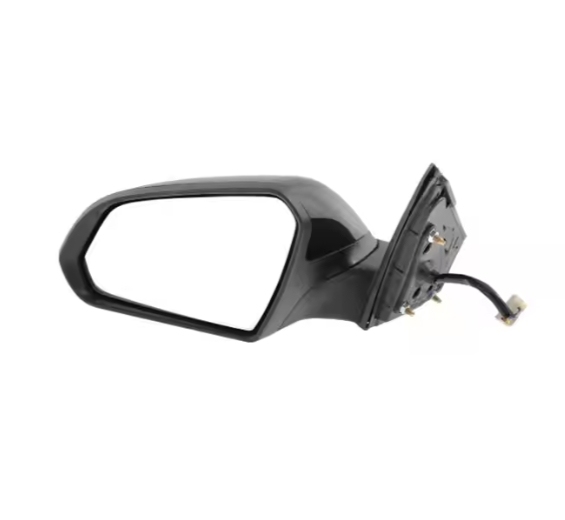English professional name: Leveling agent. Leveling agent is a commonly used coating additive. It can promote the coating to form a flat, smooth and uniform coating film during the drying and film-forming process. A type of substance that can effectively reduce the surface tension of coating fluid and improve its leveling and uniformity. It can improve the permeability of the coating fluid , reduce the possibility of spots and marks during brushing, increase coverage, and make the film formation uniform and natural. Mainly surfactants , organic solvents, etc. There are many types of leveling agents, and the types of leveling agents used in different coatings are also different. High boiling point solvents or butyl cellulose can be used in solvent-based finishes . In water-based coating agents, surfactants or polyacrylic acid, carboxymethyl cellulose , etc. are used.

Introduction #
Leveling agents are broadly divided into two categories. One works by adjusting the viscosity of the paint film and the leveling time. Most of these leveling agents are high-boiling organic solvents or their mixtures, such as isophorone, diacetone alcohol, Solvesso150, etc.; the other It works by adjusting the surface properties of the paint film. Most of the leveling agents that people generally refer to refer to this type of leveling agent. This type of leveling agent migrates to the surface of the paint film through limited compatibility, affecting surface properties such as the interfacial tension of the paint film, so that the paint film can achieve good leveling. According to different chemical structures, there are three main categories of this type of leveling agent: acrylic, silicone and fluorocarbon.
Classification #
Silicone type #
Silicone oil
Commonly used silicone oils include polydimethylsiloxane and polymethylphenylsiloxane. Polydimethylsiloxane is used in coatings and inks. Although polymethylphenylsiloxane has good compatibility, it does not have the ability to control the surface state, so it is basically not used in leveling agents and is mostly used for high temperature resistance.
Polydimethylsiloxane
Although it has good surface state control capabilities, it has many shortcomings, such as poor compatibility, which will affect the gloss of the coating film, and shrinkage holes and interlayer adhesion problems often occur. Polydimethylsiloxanes vary in molecular weight and have different compatibility and uses. Organically modified polydimethylsiloxane has obvious advantages over silicone oil. It not only retains the advantages of silicone , but also uses modified products to overcome its shortcomings and exert many special functional effects. The key to the performance and use of modified siloxane is the molecular weight and type of siloxane, the type of modified compound and its position in the molecule. There are many ways to modify it.
Polyether polyester modified organosiloxane
Organopolysiloxane with comb structure. n+m is about 50-250, and the molecular weight is controlled between 1000-150000. Its compatibility is adjusted by polyether and polyester. The longer the chain, the better the compatibility. Among these, polyether modifications are the most common, and ethylene oxide and propylene oxide are usually used. As the ethoxy group content increases, its compatibility with water also increases, so water-soluble silicone leveling agents can be synthesized. Ethylene oxide and propylene oxide can be used alone or mixed to control hydrophilicity and lipophilicity. If it contains both ethoxy and propoxy groups, it can be made into a water-oil dual-purpose silicone leveling agent, such as the 1080 and 1090 series products of Moneng Chemical.
The larger the molecular weight, the stronger the ability to control the surface state, and the better the slip and anti-adhesion properties, such as the 1070 and 1071 series products of Moneng Chemical.
There are two ways to connect modified polyester or polyether to siloxane: one is silicon-oxygen bond; the other is silicon-carbon chain. Generally speaking, the thermal stability and water resistance of the former are not as good as the latter.
The compatibility of silicone modified with polyether and polyester with resin has been greatly improved, and the surface tension is reduced, and the ability to control surface flow, slippage, anti-crater, and anti-adhesion effects are also very good. , some products also have inter-layer adhesion problems. Especially polyether-modified polysiloxane has poor thermal stability and is prone to foam stabilization. Be sure to be aware of the negative effects of these products when applying them.
Alkyl modified organosiloxane
As mentioned earlier, polyether-modified polysiloxane has some shortcomings; alkyl-modified polysiloxane has exactly these advantages.
This series of polysiloxane products also has a comb structure. The molecular weight of this type of product is relatively small, around 10,000, and n+m is about 30-50. The purpose of modification with alkyl groups is mainly to improve thermal stability, compatibility and foam instability, and even have defoaming function. However, as the modified alkyl chain grows, its ability to reduce surface tension also decreases.
Acrylic type #
product description
Resin-type surface flow control agents are mostly linear resin polymers, mainly including acrylic resin, urea-formaldehyde resin and melamine-formaldehyde resin. In general systems, the compatibility of these resins is limited. They will accumulate on the surface to form a new resin film, which will balance the surface tension of the coating. However, they will not reduce the surface tension, so they will not affect the surface tension. The flow of paint is often called a flow accelerator. This type of leveling agent contains acrylic resin as the main component.
Acrylic leveling agents can not only promote the flow and leveling of the coating film, but also will not affect the interlayer adhesion of the coating film, and also have a defoaming effect.
Leveling principle
The compatibility of acrylic leveling agents is an important indicator of its ability to control the surface condition of the coating film. The compatibility is too good, and it dissolves in the coating film, and will not form a new interface on the surface of the coating film, and cannot provide leveling effect; the compatibility is too poor, and it is impossible to evenly distribute on the surface of the coating film, and will aggregate with each other. , prone to shrinkage-like defects. It will reduce the gloss of the coating film and produce undesirable side effects such as haze. Only with ideal controlled compatibility will a new interface layer be formed on the surface of the coating film to play a leveling role.
Product Categories
The controllability of acrylic leveling agents is achieved by changing the molecular weight and polarity. The compatibility of homopolymers is not as good as that of copolymers. For example, homopolymerized acrylic acid usually has poor compatibility with resins used in epoxy, polyester, polyurethane and other coatings. If they are mixed by physical methods, a surface will form. The matte coating film is in poor condition, so acrylic homopolymer is not suitable as a leveling agent. Ideal leveling agents mostly use copolymers, which can be terpolymers or modified copolymers. Only copolymers can change the polarity and glass temperature of the polymer through different monomers.
Usually the number average molecular weight of acrylic leveling agents is controlled between 6000-20000, the molecular weight distribution is relatively narrow, the glass flower temperature is controlled below -20°C, and the surface tension is below 25-26mN/m. This limited compatibility acrylic copolymer is considered a good leveling agent.
Acrylic leveling agents can be homopolymers or copolymers; they can have linear structures or branched chains; they can also be random copolymers or block copolymers.
1) Fluorine-modified acrylic leveling agents are widely used. Using fluorine-modified acrylic makes the advantages and disadvantages of fluorine and acrylic complement each other, making this type of leveling agent more perfect.
2) Application of acrylic leveling agents Pure acrylic leveling agents have little effect on surface tension, so they are often used as flow and leveling aids, especially for iron printing coatings and coil coatings, to eliminate roller marks. is beneficial. There are also wood paints that can be applied to help eliminate brush marks.
When applying, special attention should be paid to the compatibility with the paint. Generally speaking, those with large molecular weights have poor compatibility, but have good flow and leveling properties; those with small molecular weights have good compatibility, but have poor flow and leveling properties.
Acrylic leveling agents can not only be used in oil-based paints and water-based paints, but are also commonly used leveling agents in powder coatings. Such products include 1153 from Mo Neng Chemical.
main effect #
The main function of paint is decoration and protection. If there are flow and leveling defects, it will not only affect the appearance, but also damage the protective function. For example, the formation of shrinkage cavities will cause insufficient thickness of the paint film, and the formation of pinholes will lead to discontinuity of the paint film, which will reduce the protective properties of the paint film. During the construction and film-forming process of paint, some physical and chemical changes will occur. These changes and the properties of the paint itself will significantly affect the flow and leveling of the paint.
After the coating is applied, new interfaces will appear. Generally, they are the liquid/solid interface between the coating and the substrate and the liquid/air interface between the coating and the air. If the interfacial tension of the liquid/solid interface between the paint and the substrate is higher than the critical surface tension of the substrate, the paint will not be able to spread on the substrate, and leveling defects such as fish eyes and shrinkage holes will naturally occur.
The volatilization of solvent during the drying process of the paint film will cause temperature, density and surface tension differences between the surface and the interior of the paint film. These differences will in turn lead to turbulent motion inside the paint film, forming the so-called Benard vortex. Benard vortices can cause orange peel; in systems containing more than one pigment, if there is a certain difference in the mobility of the pigment particles, Benard vortices are also likely to cause floating colors and blooming, and vertical surface construction can cause silk streaks.
During the drying process of the paint film, some insoluble colloidal particles are sometimes produced. The production of insoluble colloidal particles will lead to the formation of a surface tension gradient, which often leads to the generation of shrinkage holes in the paint film. For example, in a cross-linked curing system, the formula contains more than one resin. During the drying process of the paint film, as the solvent evaporates, the less soluble resin may form insoluble colloidal particles. In addition, in formulas containing surfactants, if the surfactant is incompatible with the system, or as the solvent evaporates during the drying process, its concentration changes, resulting in a change in solubility and the formation of incompatible droplets. There will also be a difference in surface tension. These may cause shrinkage cavities.
During the construction and film-forming process of the coating, if there are external pollutants, it may also cause leveling defects such as shrinkage cavities and fish eyes. These pollutants are usually oil, dust, paint mist, water vapor, etc. from the air, construction tools and substrates.
The properties of the paint itself, such as application viscosity, drying time, etc., will also have a significant impact on the final leveling of the paint film. Too high an application viscosity and too short a drying time will often produce a poorly leveled surface.
Therefore, it is necessary to add a leveling agent, adjust some changes during the construction and film-forming process of the paint, and adjust the properties of the paint to help the paint obtain a good leveling.
use #
For a certain formula system, the appropriate leveling agent type should be selected based on the properties of the formula and the performance expected to be achieved by the leveling agent.
Solvent-based coating system #
Acrylic levelers are often used in primer and midcoat formulations. If degassing and substrate wettability are required, choose
Choose medium or high molecular weight acrylic leveling agents. In primers, if stronger substrate wetting is required, consider using silicone leveling agents and modified acrylic leveling agents that can significantly reduce surface tension (such as fluorine-modified acrylic leveling agents and phosphate-modified leveling agents). acrylic leveling agent). If silicone leveling agents and fluorine-modified acrylic leveling agents have side effects such as foam stabilization and affecting interlayer adhesion, phosphate-modified acrylic leveling agents should be used.
n topcoat and clearcoat formulations, the requirements for the appearance of the paint film are relatively high. Generally, low molecular weight acrylic leveling agents can be used, which will achieve good leveling properties and will not easily produce haze in the paint film. In cross-linked curing systems, the use of acrylic leveling agents containing reactive functional groups often achieves better leveling properties while improving the physical and chemical properties of the paint film. If the paint film needs to have better fluidity or needs to be slippery and scratch-resistant, a silicone leveling agent is necessary. In this case, it is best to use a silicone leveling agent and an acrylic leveling agent in combination.
It should be noted that when constructing on vertical surfaces, silicone leveling agents can effectively reduce the tendency of the coating to sag while providing leveling properties. In addition, in the formulation of metallic flash paint, silicone leveling agents should be used with caution, because they may cause uneven arrangement of flake aluminum pigments and uneven color of the paint film.
Powder coating system #
The powder coating leveling process is divided into two stages. The first stage is the melting of the powder particles, and the second stage is the melting of the powder particles and their flow into a smooth paint film. Powder coatings do not contain solvents and do not produce surface tension gradients during the film formation process. Leveling is more related to the wetting of the substrate.
Acrylic leveling agents are often used in powder coatings. If the leveling agent is in liquid form, it generally needs to be made into a masterbatch before it can be used. There are also acrylic leveling agents made into powders, which are specially used for powder coatings. These products adsorb liquid acrylic leveling agents on silica powder. Some low-end leveling agents use calcium carbonate to adsorb.
If the powder coating requires slipperiness and scratch resistance, a silicone leveling agent must be used. There are already silicone leveling agents made into powder that are specially used for powder coatings. When using silicone leveling agents, care should be taken to avoid the formation of shrinkage cavities.
Water-based coating system #
Water-based coating systems are divided into water-soluble systems and latex systems.
In water-soluble systems, it is necessary to strongly reduce the surface tension of the system. The most commonly used are silicone leveling agents and fluorocarbon compounds.
Physical leveling agents perform the same function as they would in solvent-based coating systems. Of course if a truly smooth surface is required, acrylic leveling agents for water-based systems are necessary.
For latex systems, the film-forming mechanism is completely different, and the viscosity does not change with the volatilization of the solvent. The use of leveling agents in the formula may improve the substrate wettability of the paint. Acrylic leveling agents can improve the flatness of the paint film, but the main flow properties of the paint are more controlled and adjusted by adding rheology control agents.

 April 1, 2024
April 1, 2024 










